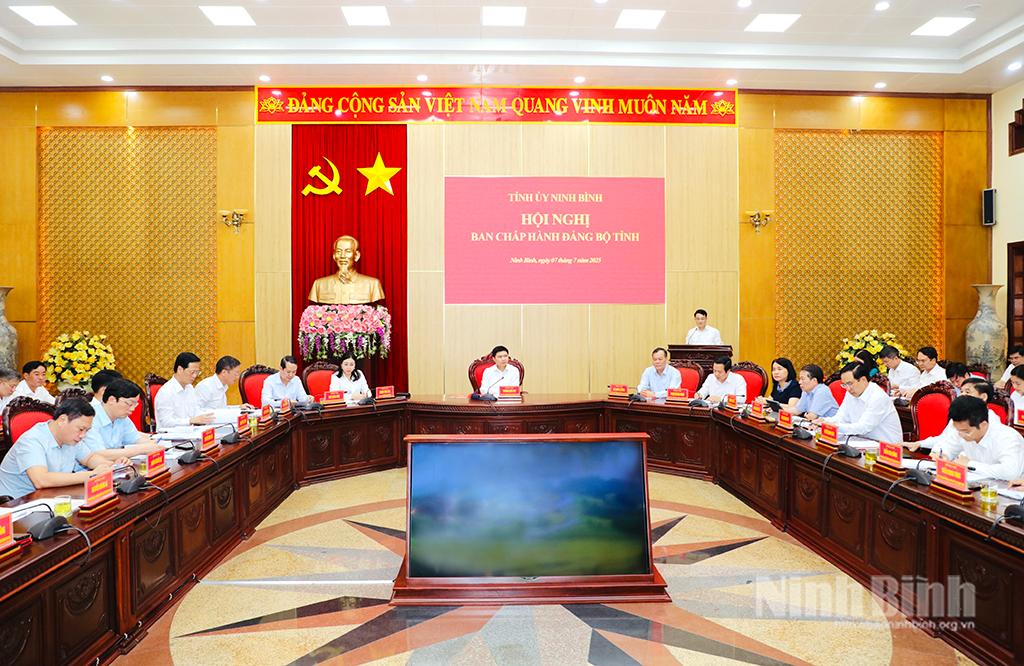Developing spiritual tourism in Ninh Binh province

The cultural treasures have been preserved, upheld and enriched through many generations across different periods of time. The artifacts possess unique spiritual value imbued with national identity. That spiritual value has a promising appeal for tourists and pilgrims.
Effectively utilising potential
The inception of spiritual tourism development in Ninh Binh was marked by the construction of the spiritual tourism complex of Bai Dinh pagoda in 2004. To date, a strategy on developing spiritual tourism at the southern gate of the capital city of Hanoi has been formed, aiming to create characteristic fine arts handicraft products, generate jobs for hundreds of thousands of rural labourers and facilitate the locality's sustainable development. The strategy requires detailed policies and mechanisms on landscaping management, tourism personnel training, service improvement, and craft industry development.
Ninh Binh is considered one of the centres of Buddhism and Christianity in Vietnam. The province is now home to a number of ancient places of worship, including the century-old Phat Diem stone cathedral and the newly constructed 700-hectare Bai Dinh pagoda - the largest Buddhist cultural and spiritual centre in Vietnam. The province currently has 242 temples, 380 shrines, 209 temples and 148 other places of worship within its borders. Constructed hundreds of years ago, a number of these sites have been recognised as special national historical sites, such as the temples commemorating King Dinh Tien Hoang and King Le Dai Hanh and the ancient Bai Dinh pagoda. The cultural and historical value of the sites has help Ninh Binh establish the richness and diversification of spiritual culture.
In addition to religious sites, Ninh Binh also abounds with spectacular landscapes, such as the Van Long tourist site, the Trang An cave system, the Tam Coc - Bich Dong river cave and the Kenh Ga hot mineral spring. Therefore, visitors to Ninh Binh can engage in two types of tourism - spiritual tourism and sightseeing tours.
This has helped the province's hospitality sector earn a sustainable annual growth rate of 16%. The local tourism industry welcomed 3.4 million visitors last year, and the number is expected to be 4 million for the whole of 2013. In the first quarter of this year alone, the number of holidaymakers accounted for around 40% of the yearly total. On the peak days of the first lunar month, Ninh Binh received as many as 80,000-100,000 visitors per day. Visitors have also begun to spend more days in Ninh Binh, on average.
Spiritual tourism is a unique strategic advantage of Ninh Binh province, inviting visitors to explore traditional religious cultural values with a deep respect for historical heritage. From the perspective of drawing on the potential attraction of the ancient capital, the leaders of the province and the local culture and hospitality sectors have drawn up projects on developing spiritual tourism, a clear-sighted decision taken in a bid to realise socio-economic development policies.
An opportunity to promote spiritual tourism to the world
Ninh Binh has been successful in transferring its economic structure from industry and agriculture to tourism and services, a shift that contributes to sustainable development and bringing practical benefits to the community and society, said the Secretary General of the UN World Tourism Organisation (UNWTO) Taleb Rifai during a working visit to Ninh Binh province in April 2012.
He proposed an initiative to hold an international conference on spiritual tourism for sustainable development in Ninh Binh, which took place on November 21-22, 2013.
The event attracted 350 delegates, including 150 international participants working in the fields of spiritual tourism communication, management and business in the region and around the world.
Spiritual tourism has great potential for development, especially in the Asia-Pacific region and in Vietnam, according to the assessment of the UNWTO. The people-to-people exchange resulting from spiritual tourism helps promote dialogue and build mutual understanding between cultures.
The conference on spiritual tourism for sustainable development was organised to strengthen the policy framework and boost community-based co-operation to protect and preserve traditional values. The conference also worked to develop regulations on using tourism resources and spiritual tourism products to create jobs for local peoples and increase product diversity.
The event contributed to encouraging education and training and enhancing the capacity and knowledge of the community in tourism management. The conference also offered a good opportunity for Vietnam, particularly Ninh Binh province, to introduce its tourism potential and products to international friends. As the province's Trang An tourism complex has been nominated for UNESCO World Heritage status, the conference helped strengthen tourism co-operation between Vietnam and the UNWTO while affirming Vietnam's role within the UNWTO.
In order to promote the positive impact of spiritual tourism on socio-economic development, the international conference focused discussions on the meaning of spiritual tourism, cultural exchange and responsible tourism, spiritual tourism products and the sustainability of spiritual tourism sites.
The successful organisation of the conference shows that the policies of the Party and Government on religion and belief have had a positive and great impact on religious and spiritual activities. The event affirmed that Ninh Binh is an attractive spiritual and cultural tourism destination on the world tourism map.
(Source: Nhandannewspaperonline)


